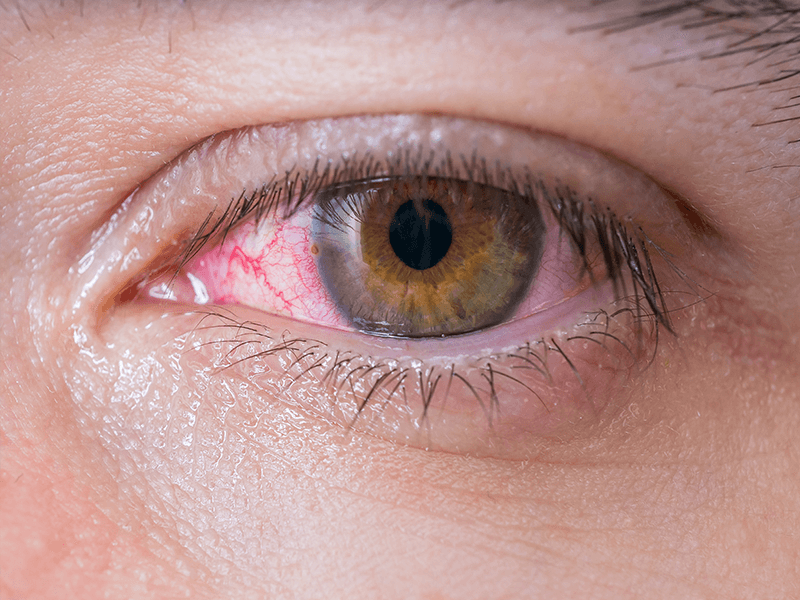What is Pink Eye?
Pink eye is a common, easily treatable eye infection that can affect people of all ages. Also known as conjunctivitis, pink eye is an irritation of the clear, thin covering of the white part of the eye. This covering is called the conjunctiva, which contains blood vessels that if inflamed can cause the blood vessels to dilate. Consequently, this can lead to the appearance of red, bloodshot eyes. The resulting inflammation can also create eye discomfort, itching, and burning. Incidentally, anyone can contract the infection, but young children, college students, and teachers are at an increased risk because they work closely with people in the classroom.

What are the Symptoms?
Some of the symptoms that you may experience in dealing with conjunctivitis include:
- Swollen eyelids
- Sensitivity to light
- A discharge coming from the eye
- Gritty feeling in the eye
- Burning or itching of the eye
- A noticeable red or pink coloration to the eye
If you notice any of these symptoms, it is important to remove your contacts immediately (if you wear them) and notify your eye doctor.
Types of Pink Eye
There are four main types or causes of contracting pink eye.
- Viral conjunctivitis– This is the most contagious form with symptoms including itchy, watery eyes and sensitivity to light. In most cases, viral conjunctivitis will clear up without medical treatment in about two weeks.
- Bacterial conjunctivitis– This form is also contagious and is usually accompanied by a sticky, yellow or greenish-yellow discharge in the corner of the eye. In short, it is typically treated with antibiotic eye drops or ointments.
- Allergic conjunctivitis – If you suffer from seasonal allergies, you may find yourself more susceptible to this form. It is often caused by irritants such as dander, pollen, and dust. Thus, you may experience stuffiness, a runny nose, and light sensitivity. However, it is typically not contagious.
- Chemical Pink Eye – This form comes from exposure to noxious chemicals in the swimming pool. Simply avoid this infection by wearing goggles when swimming. Luckily, it is not contagious.
How to Avoid Eye Infections
There are several ways to ensure that pink eye stays far away from you and your family. Make sure to wash your hands quite often throughout the day. Also, keep your hands away from your eyes as much as possible, and make sure never to share makeup or contacts. Lastly, never swim in your contact lenses and always follow your eye doctor’s instructions on proper care for your eyewear.
Share
